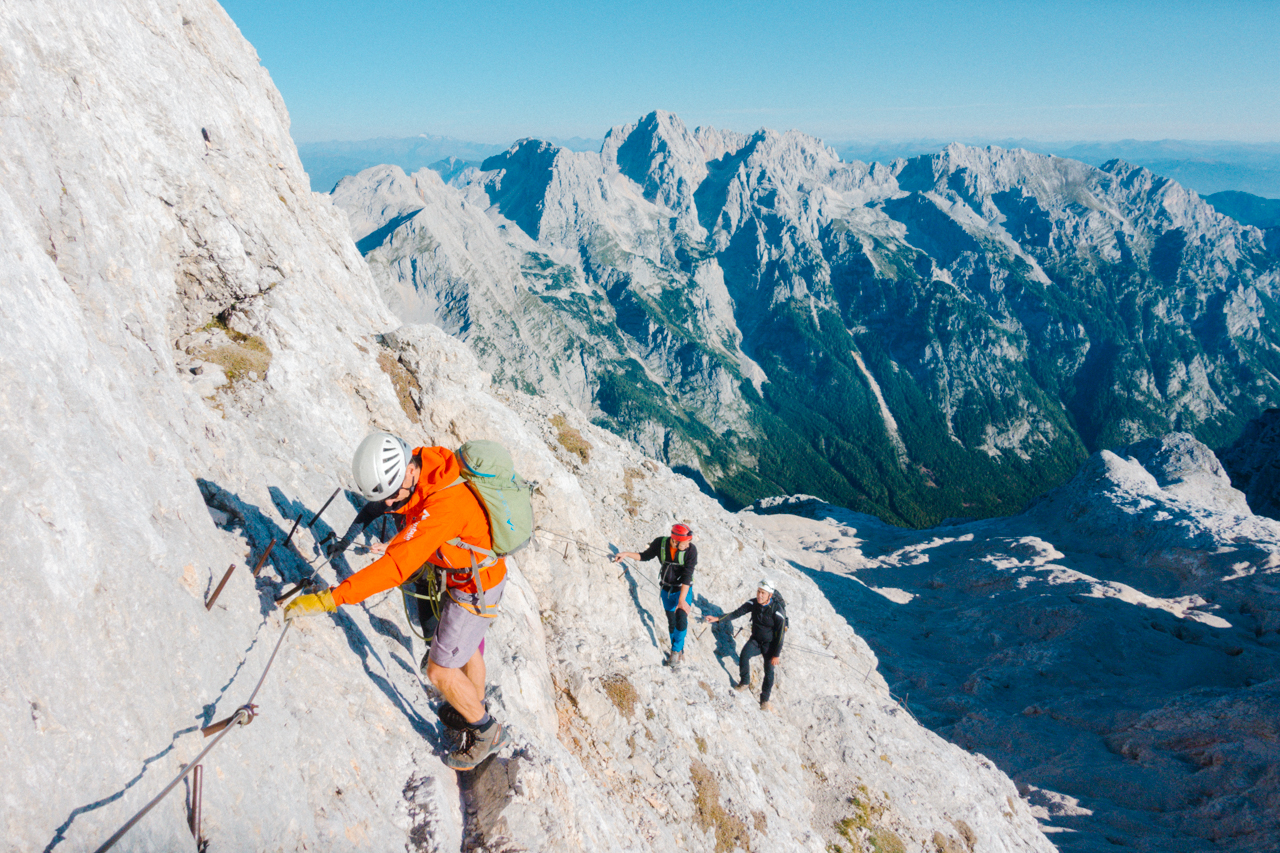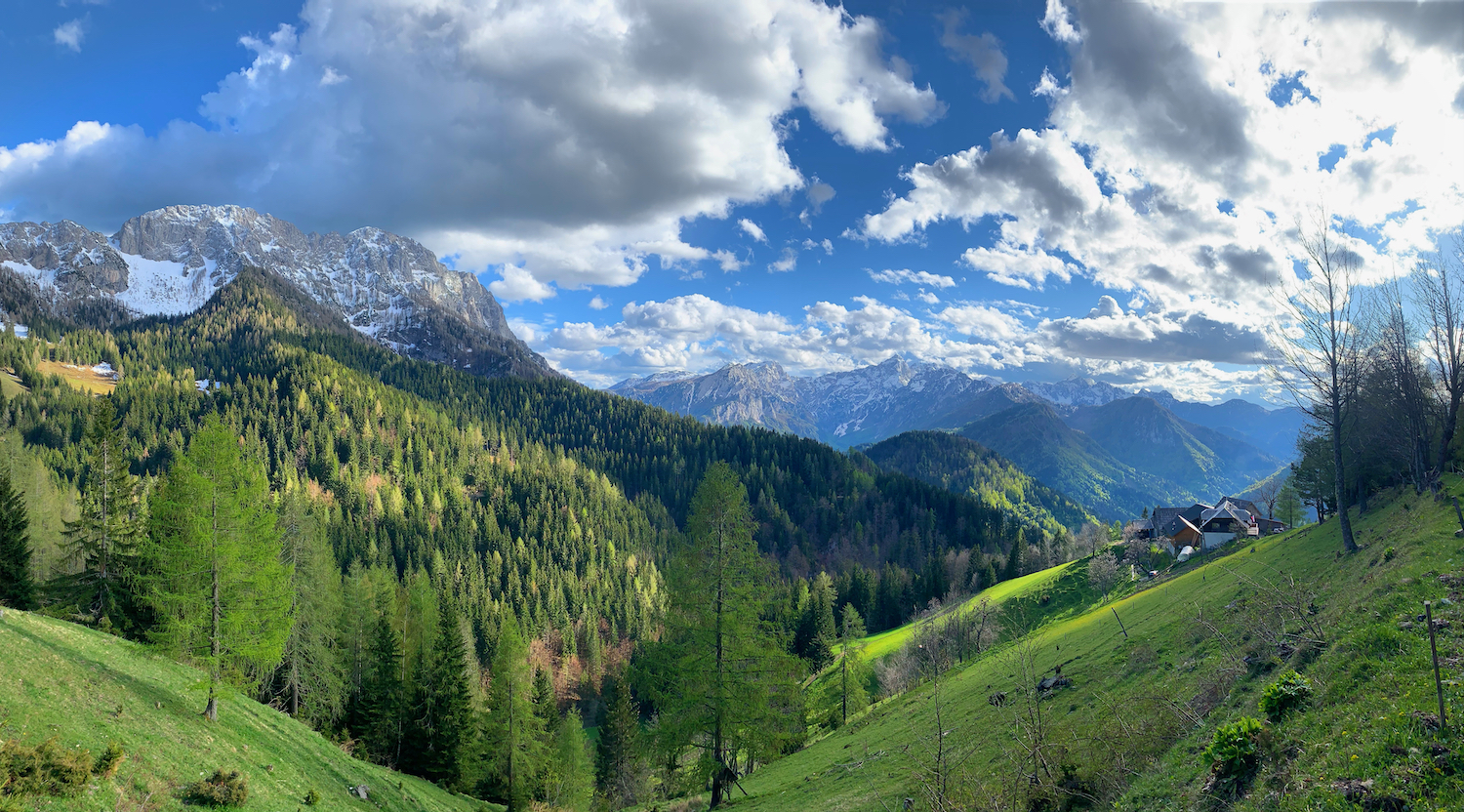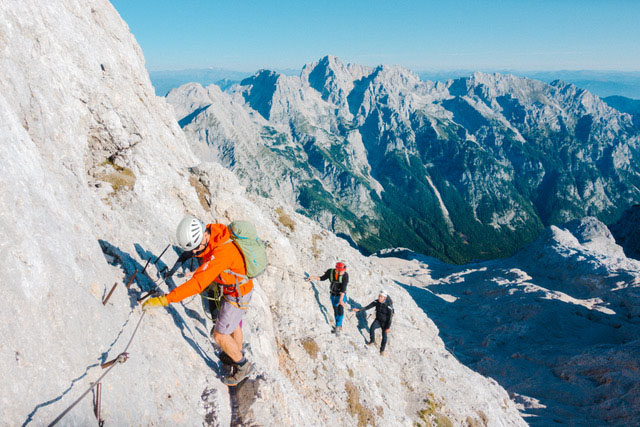A streak of sweat drops down Tone’s forehead in the hot summer sun yet he beams with pride to show us his twenty-year project; he named it “Trail of four waterfalls” (Slo. Pot štirih slapov). A school teacher by profession but also active in a local theater, a local tourist association and nature guiding in his spare time, he takes us to their cozy hut by a stream. Friendly and open locals welcome us with oven-baked trout; a welcome relief before a six-hour hike in the recently explored gorge.
Apparently the four waterfalls were only brought to public attention a little over two decades ago and Tone has been making great efforts to create a round 12-km marked trail ever since by finding passages in a labyrinth of vertical walls, fixing pitons, steel wire and stairs along the exposed slopes, and by putting signs to make it easier for hikers to find it. It’s been tough but worth it. Today he boasts a trail that has even impressed the legendary Slovenian Alpinist and extreme skier Davo Karničar.
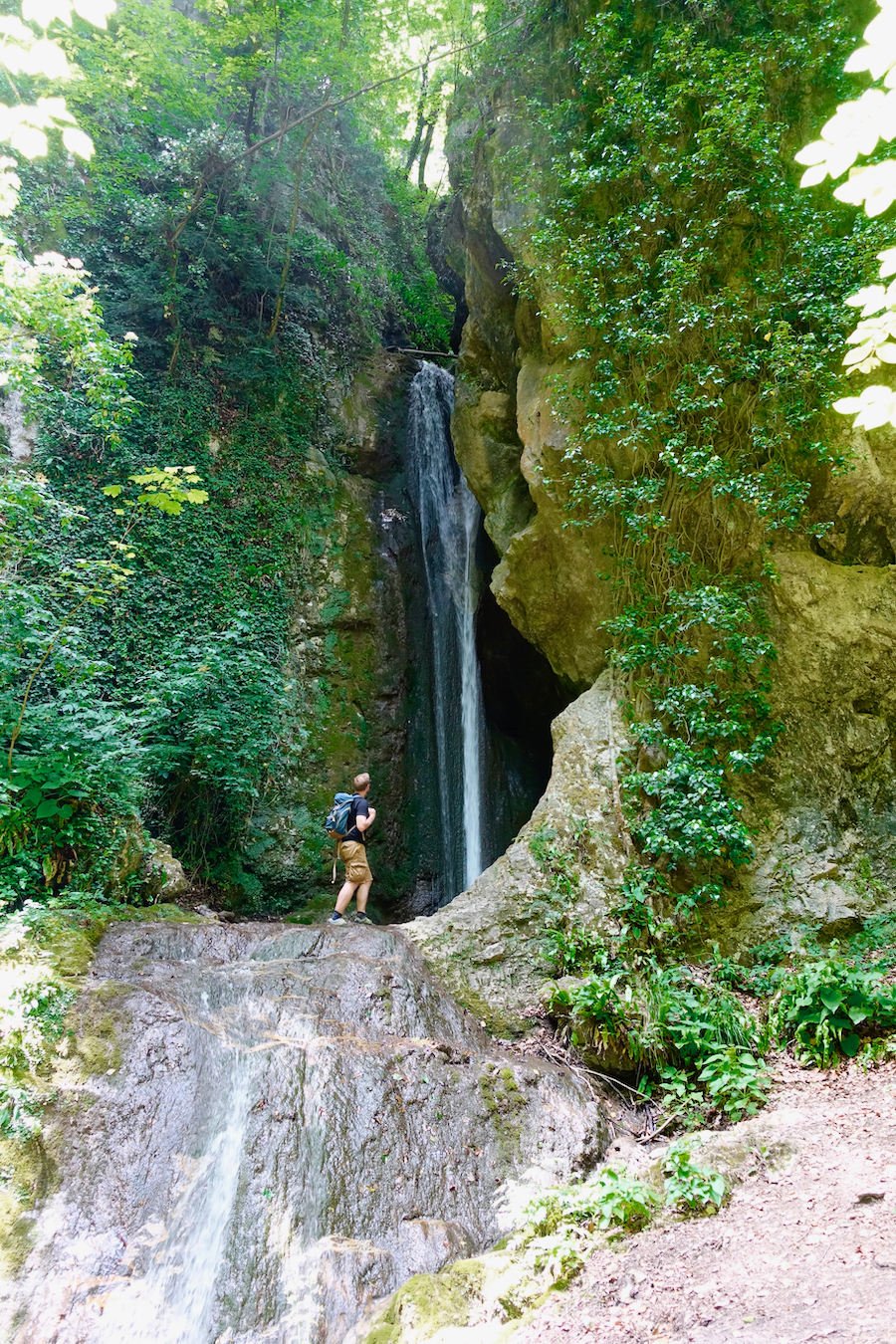
A little over 1 p.m., when the scorching sun was at its highest, we headed towards the first waterfall Bojanca. The trail wound through the narrowing gorge, exploding with tall wild flowers and ferns; a reminder we were entering a mysterious world of plunging cliffs and gushing water. As we hopped over the stream on rocks, the trail began to climb up higher and soon we found ourselves staring in awe at a delicate streak of water elegantly plunging 14.8 meters down into a pool and then continuing its course down the gorge. Surrounded by cliffs and an explosion of green, it felt like being in a rainforest. Only better – we were just a few kilometers away from gourmet food, vineyards, biking trails and stylish countryside hotels.
From there we continued up the gorge towards the second waterfall called Pekel (Hell in English), a gorgeous fall that runs down cascades with the tallest drop of 22 meters.
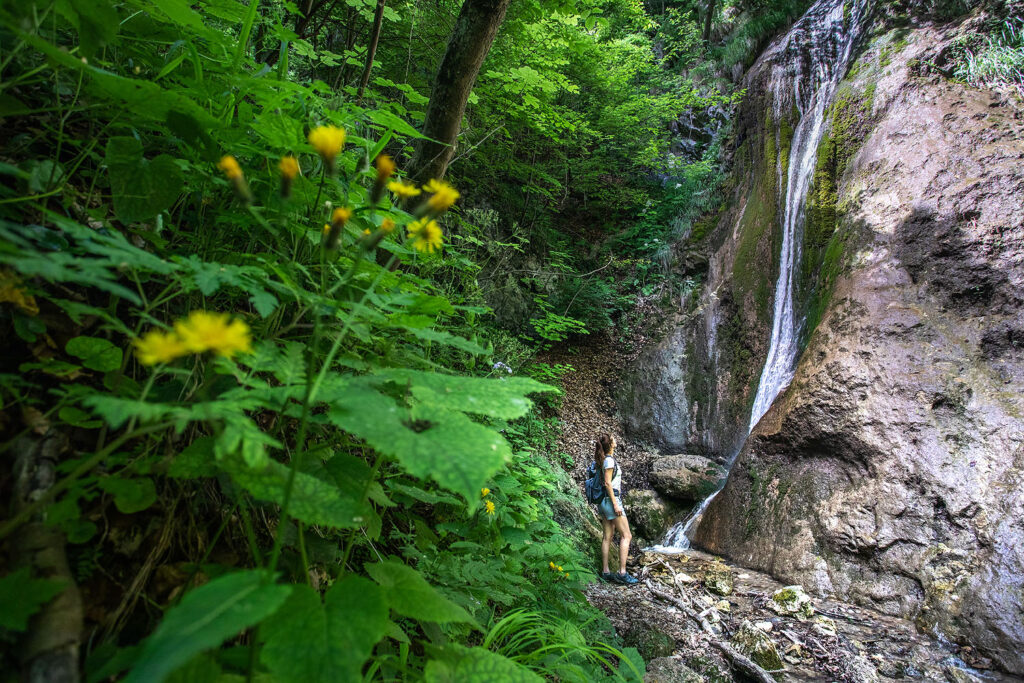
Back on empty dirt roads and trails through a sunburnt landscape to see the last two waterfalls, the last whispers of violet wild flowers just visible amid the tall grasses sang vibrating summer tunes. Here and there, remote farmsteads crouched beneath thick walls of forest: small clusters of stone barns, log houses and hayracks that were quickly swallowed up again by the trees. We passed the second oldest vine in Slovenia (the Guinness record for the oldest vine holds a more than 400-year-old vine in Maribor, Lent!) and cooled off in a cave called Ajdne Peči. which local families used as a hideout during the wars.
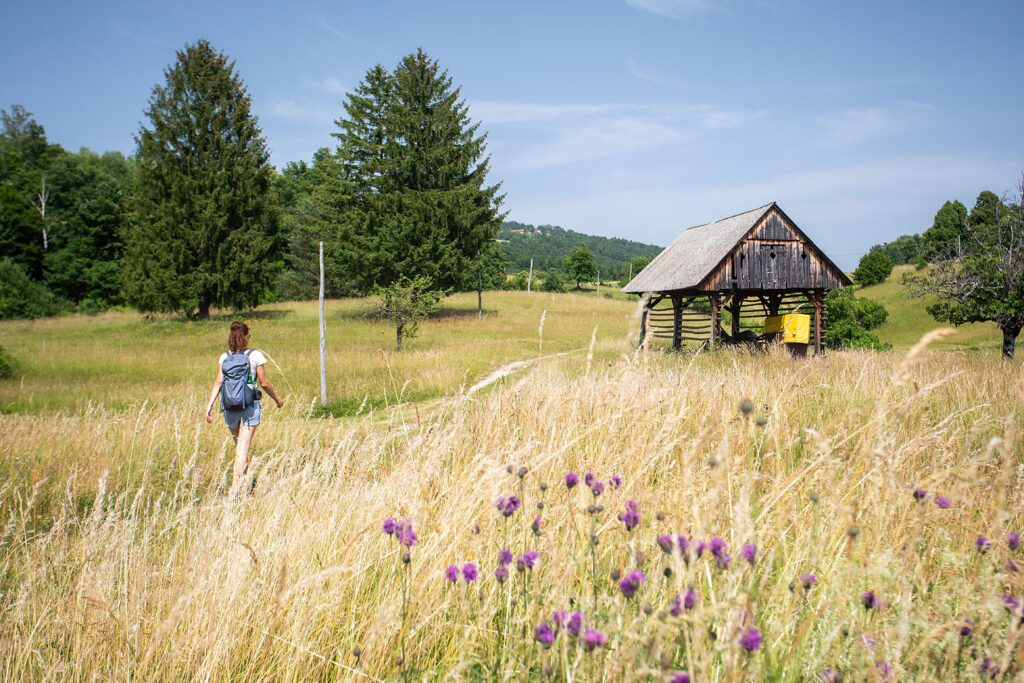
For a guided tour to the Trail of Four Waterfalls
contact Tone at Tourist Association of Senovo
(anton.petrovic@gmail.com,+38631 866 831)
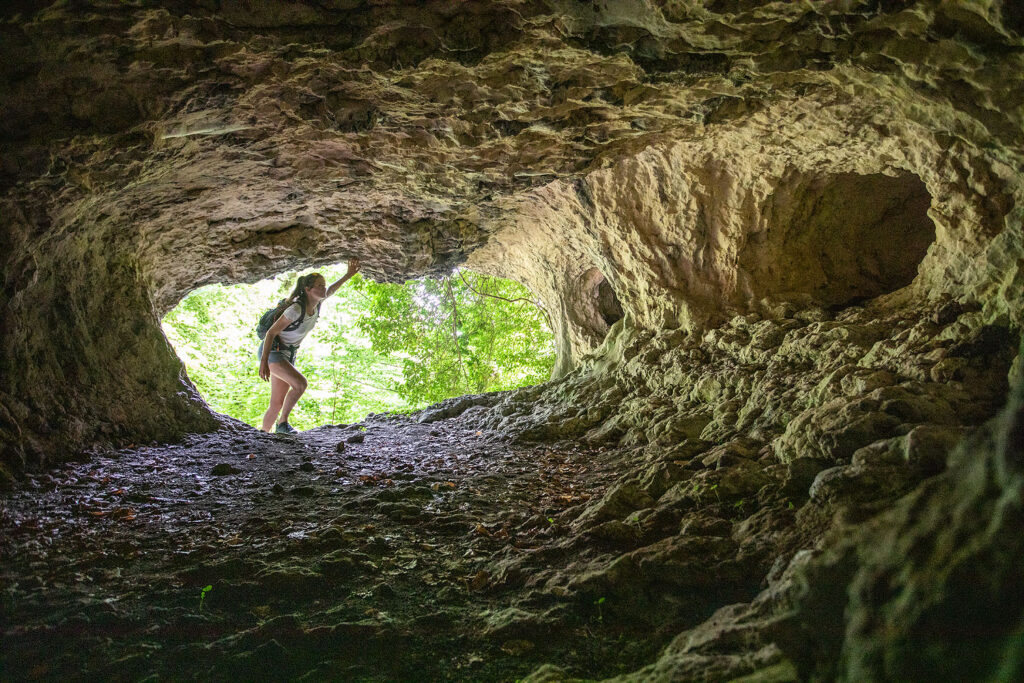
Ubijavnik, the third waterfall, drops in four cascades about 14.2 meters down a ravine in vertical walls that completely close the gorge from three sides. The tallest cascade of 6.8 meters starts from an unusual U-shaped crest and is actually the one that gives the waterfall its name Ubijavnik (Killer in English). For those who love to ice climb, you’ll find such routes just twenty meters away from the soaring Ubijavnik Fall in winter!
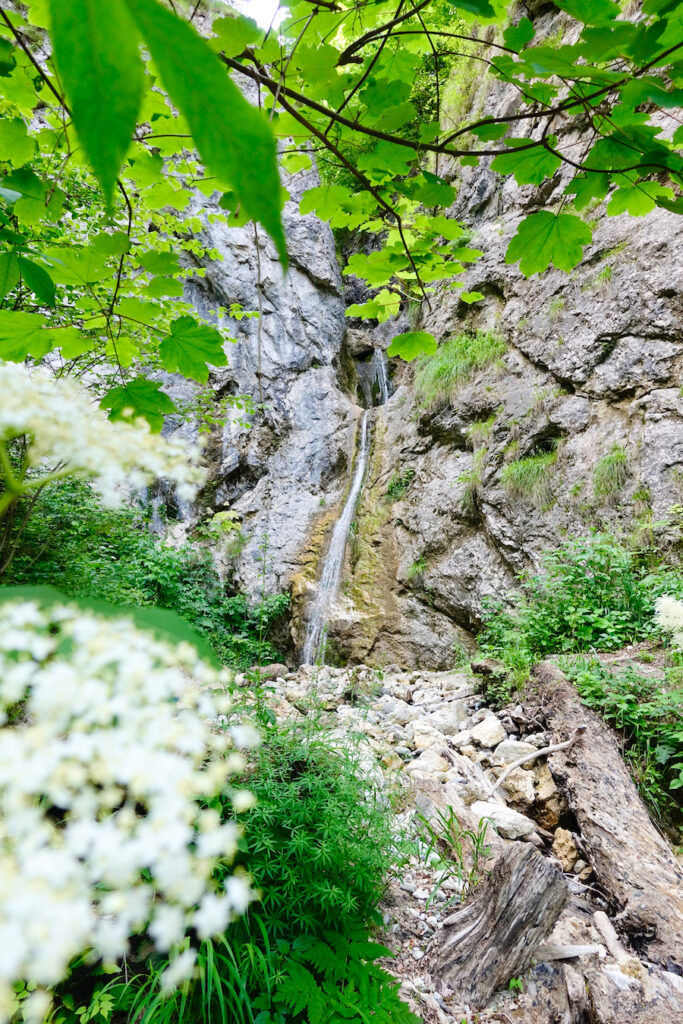
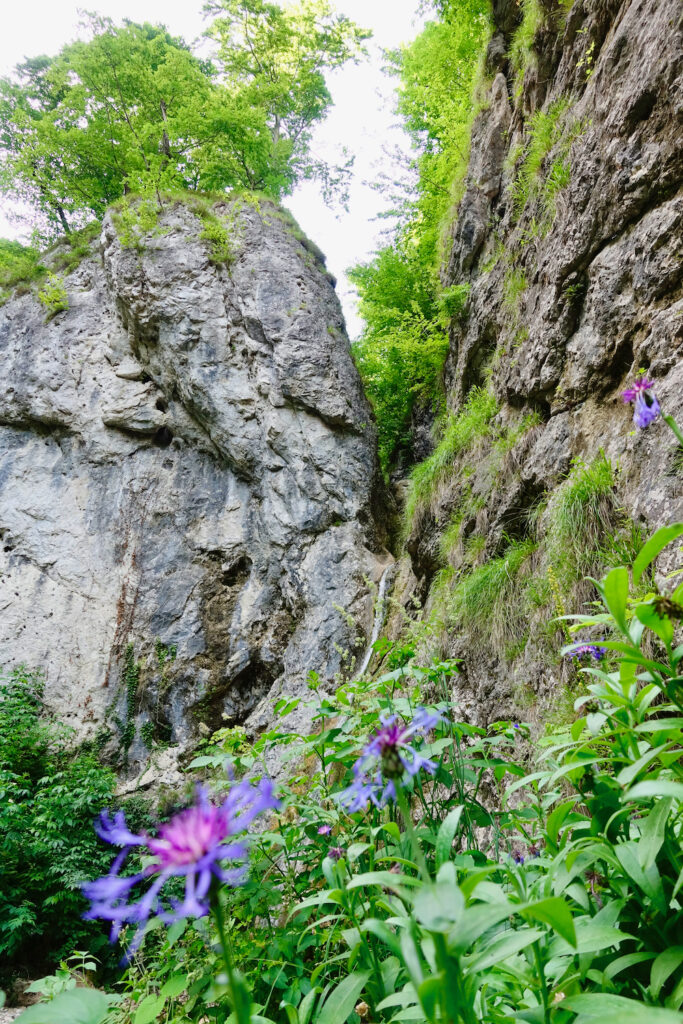
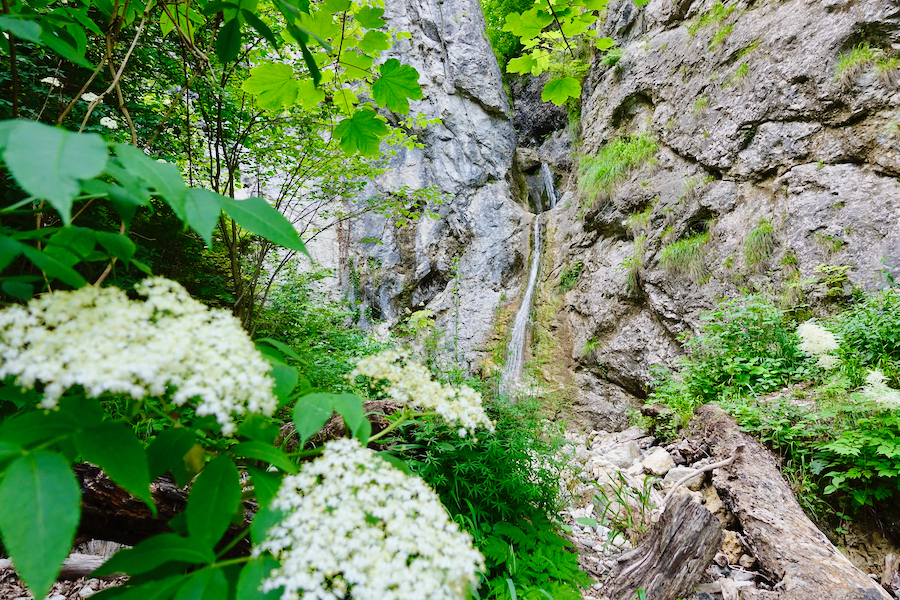
The fourth fall, Bojavnik, is the wildest. The secured trail ends right above the fall between the first shorter cascade and the longest second and third cascades, which give the fall its gracious curved shape. With no trail set, it was choose-our-own-route scramble down a steep forested slope to reach its bottom with the view of the waterfall – just the way the true adventurers at heart love to explore!
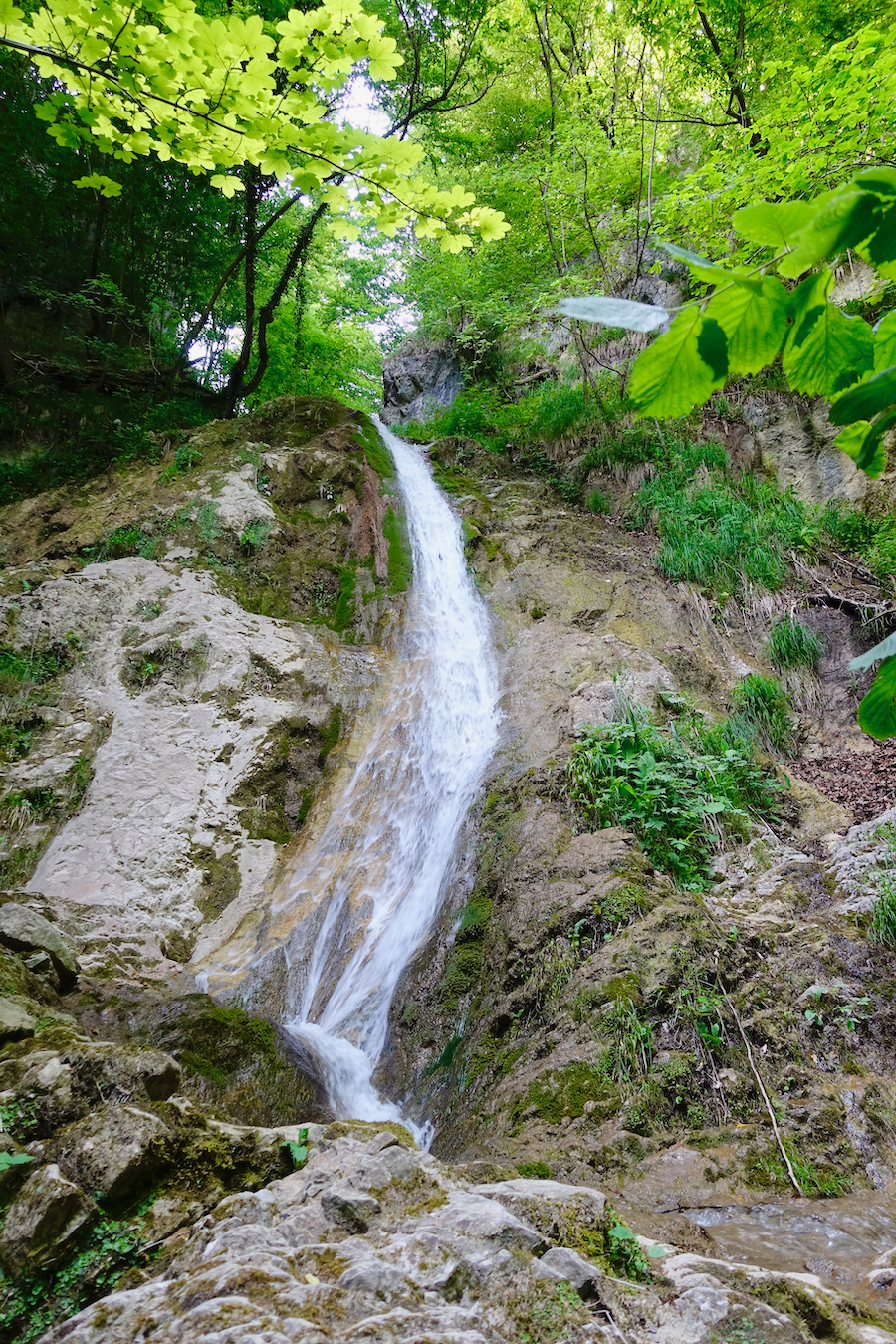
Freshening up with the ex-gold medalist Primož Kozmus
A short drive from the waterfalls, the Slovenian ex-hammer-thrower Primož Kozmus, who won gold in the 2008 Summer Olympics in Beijing and the 2009 World Championships in Berlin, runs an enchanting small hostel with a bar. We had paid him a visit in his Hostel Kozmus a day before after a 3-hour bike ride and it felt amazing to be cooling off a stone’s throw away from a magnificent basilica of Our Lady of Lourdes, on a relaxing terrace with Primož at the next table. Not surprisingly, our guide Tone knew him and Primož was soon sharing stories and plans at our table with the rest of us grinning from ear to ear. You don’t get to drink beer with an ex-gold Olympic medalist every day!
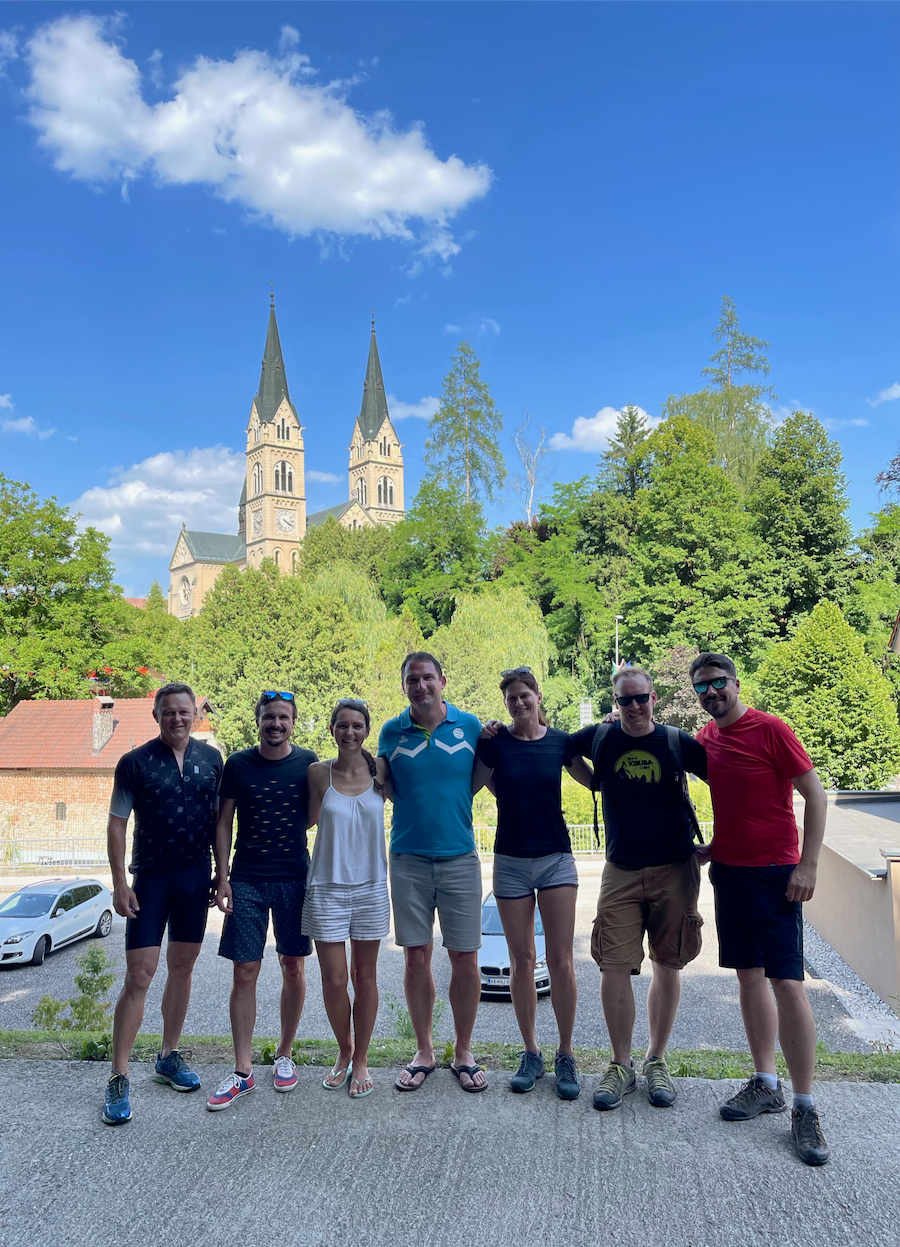
Gourmet cuisine and a butique hotel at the Tri Lučke
Back at our hotel Tri Lučke – we were staying in their stylish wooden houses with panoramic views of the vineyards, the pampering began. Their hotel and restaurant boast a long tradition of being the place to go to in the Posavje region; they’ve got boutique style, fine cuisine paired with a selection of the best local wines, and gorgeous location. Hidden away in wine-growing rolling hills above Krško, it’s a world away from the industry and the fast life of Posavje’s old town. With the surrounding hills interwoven with hiking and biking trails (Tri Lučke rents e-bikes to guests for free!), you get to enjoy the outdoors while they spoil you with exceptional food and wine. Lucky us, our stay included full board!
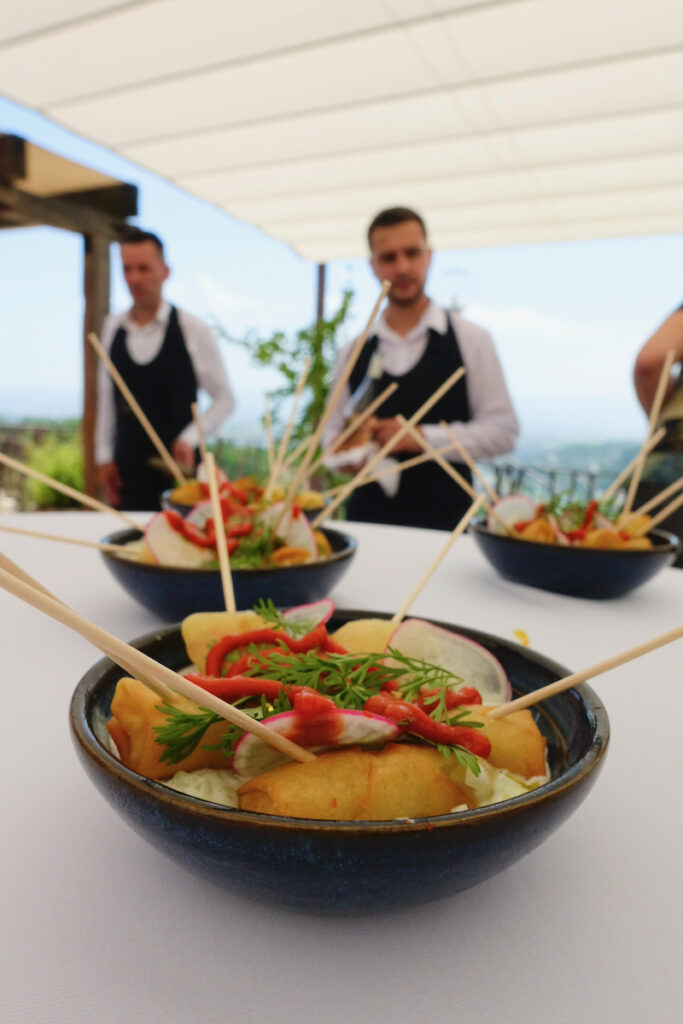
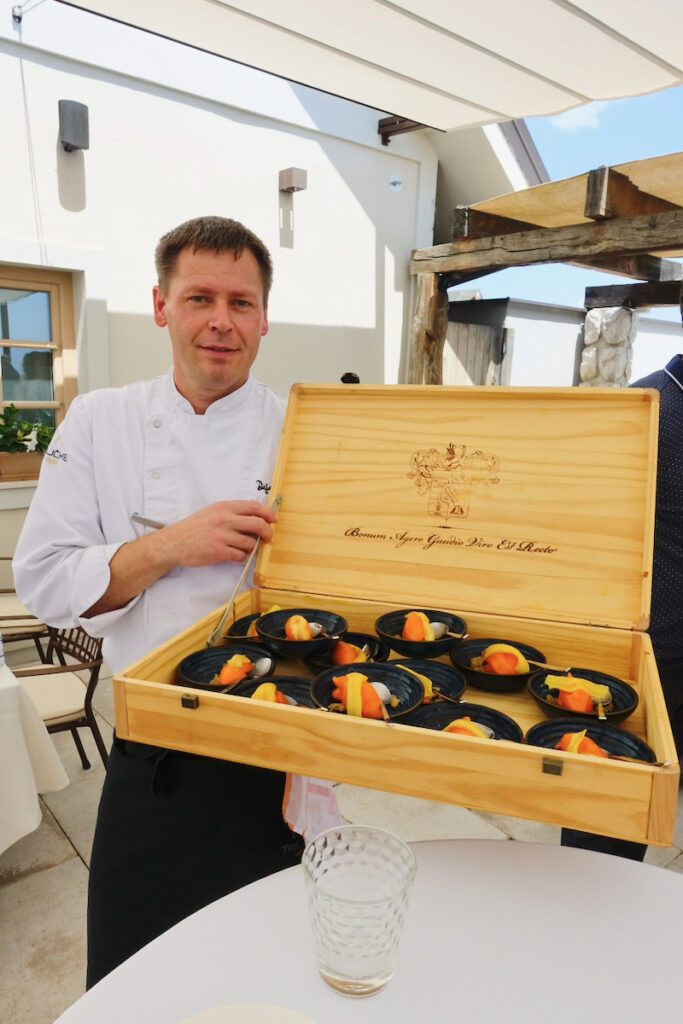
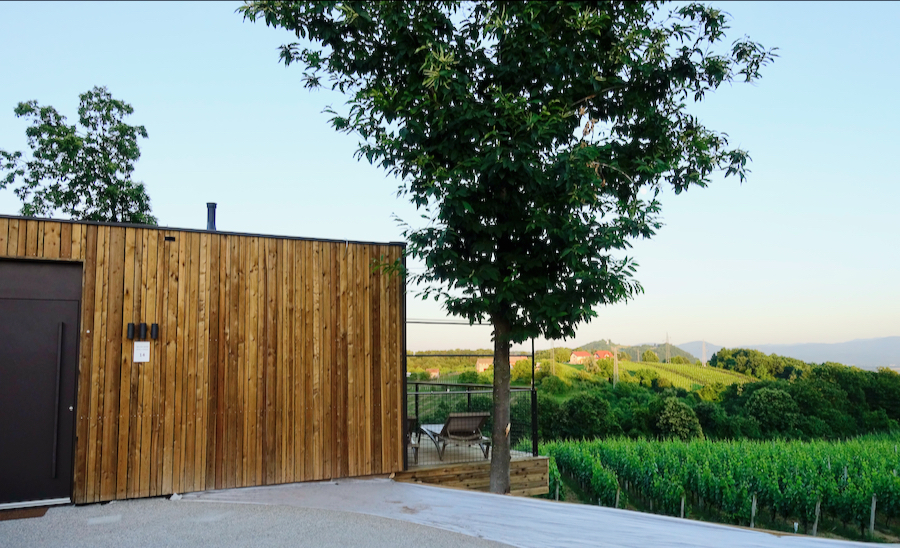
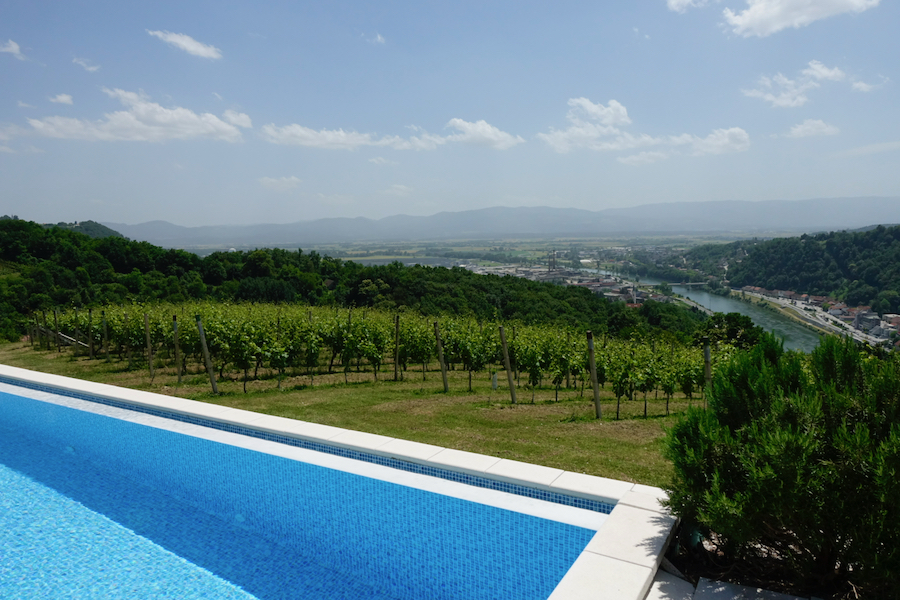
Dejan Mastnak, a modestly looking chef, yet recognized for his cuisine combining mostly seasonal and local produce, escorted plates of our four-course set menu to the table. With a beam of pleasure he presented every detail on a masterly set plate and explained how the selected wine matched the food. The veal tenderloin melted in my mouth and I was curious about what was next. After a long line of plates, an even longer line of glasses of wine and two mouth-watering desserts (my favorite: iced vanilla cream with sweet popcorn and wild berries sauce!), I was good to crash out in the comfy bed in my cute wooden house.
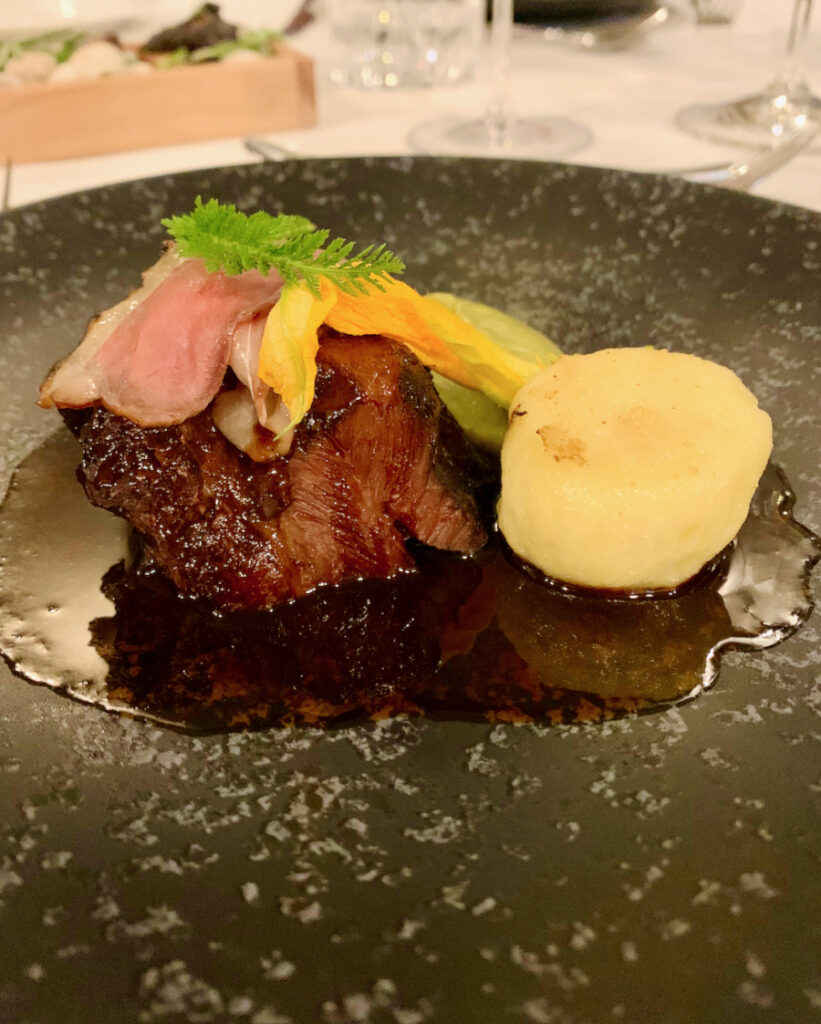
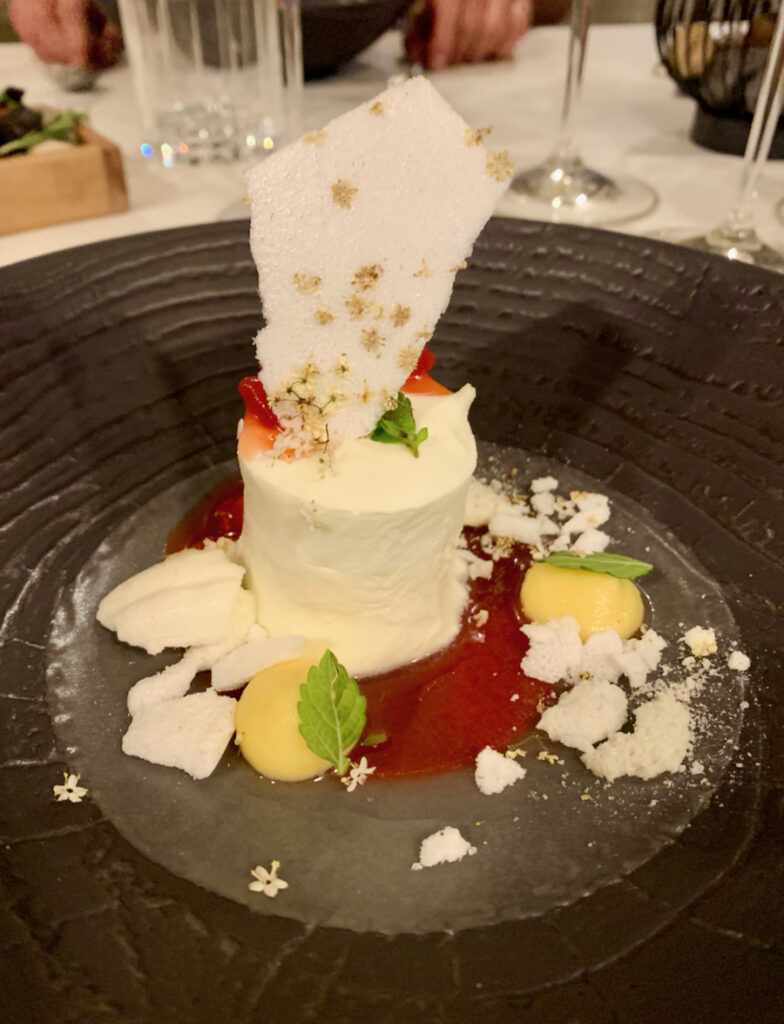
Gorgeous morning in the vineyards
The day is slowly awakening as my alarm sets off. The thought of sleeping in is tempting but not as much as going for a run in the vineyards at sunrise! I put on my running shoes and creep out onto the road not to wake anyone else. Our side of the Sremič hills is still in the dark but as soon as I reach the top plateau, I can see the first sunrays glistening through the forest.
One of the first spots to receive the warm sun is the viewpoint by the St. Mohor church. Underneath, the Rajhenburg Castle stands tall in a forest that stretches along the winding Sava River, and as the sun casts its first sunrays on the hills above the sleepy valley, the castle lights up amid dark trees in the warm sunrise.
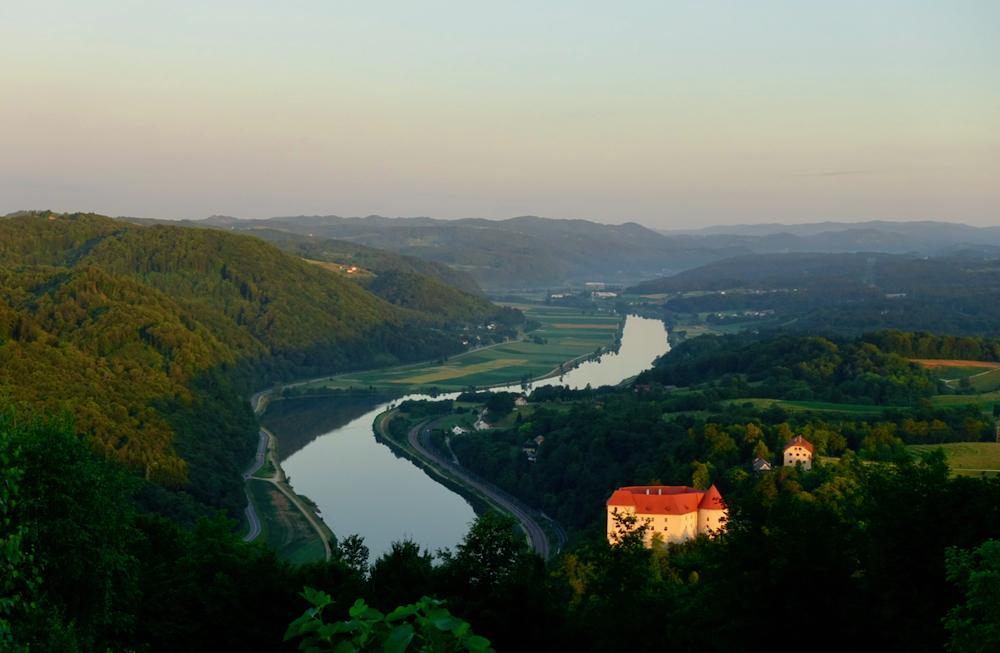
I snap a photo before dashing off towards Bučerca, a cluster of farmhouses in the vineyards, already sunbathing in the golden sun, and then loop back home.
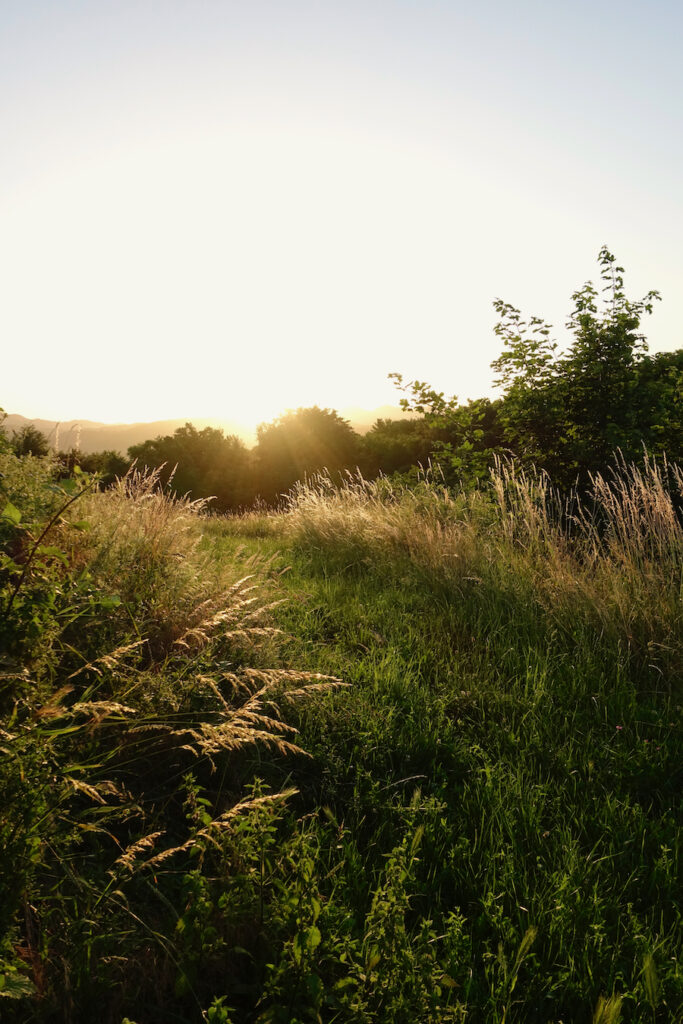
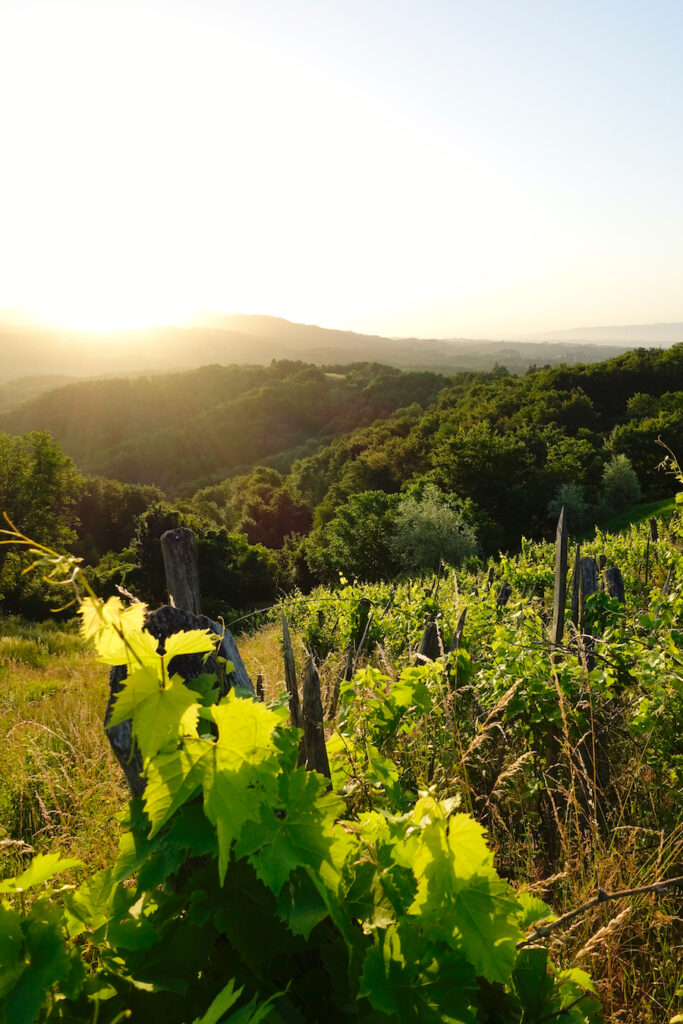
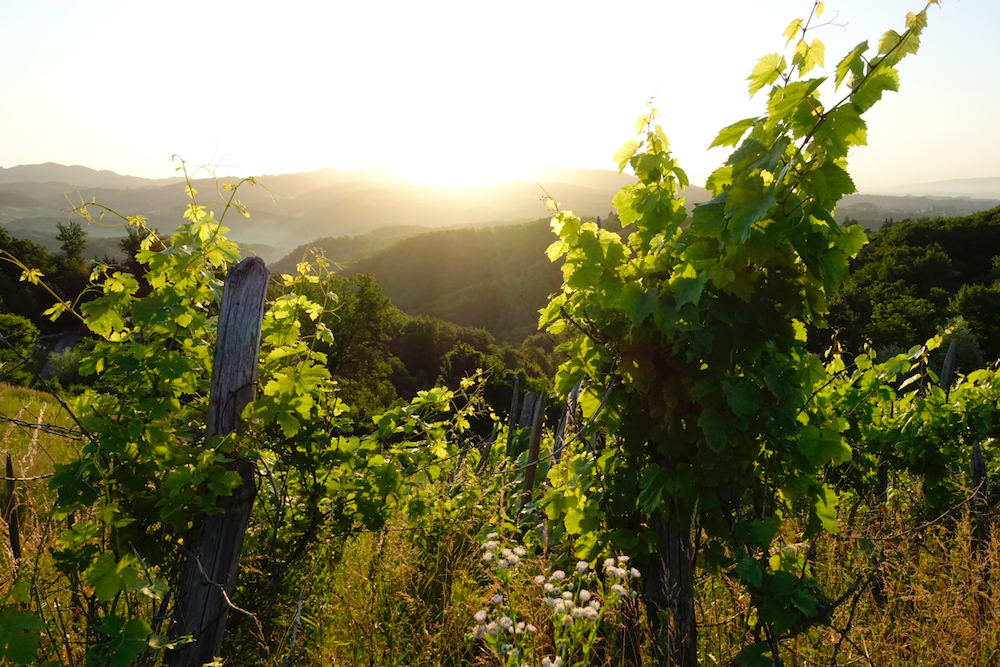
After the finger-licking breakfast at the Tri Lučke (I’m still dreaming of the delicate fresh cheese štrudelj with tarragon and smoked trout…), we are off to some local tourist attractions, which, surprisingly, turned out great fun!
Rajhenburg Castle and Trappists
Even if you’re not into castles, you’re going to love this one; here is its story. Built in the 12th century, the Rajhenburg was first run by important families and individuals like Archbishop Konrad of Salzburg. In 1881, Trappist monks from France took over the castle, bringing considerable progress to the castle and the surrounding area. The monks lived an extremely modest life, they made everything they needed by themselves (like wooden clogs and simple clothes), and were only allowed to treat themselves to some wine. Nevertheless, their impact was huge. Their main products such as the Trappist cheese, Imperial chocolate and liqueur used to be sold Europe-wide, whereas the Trappist cheese brand sells in superstores even nowadays!
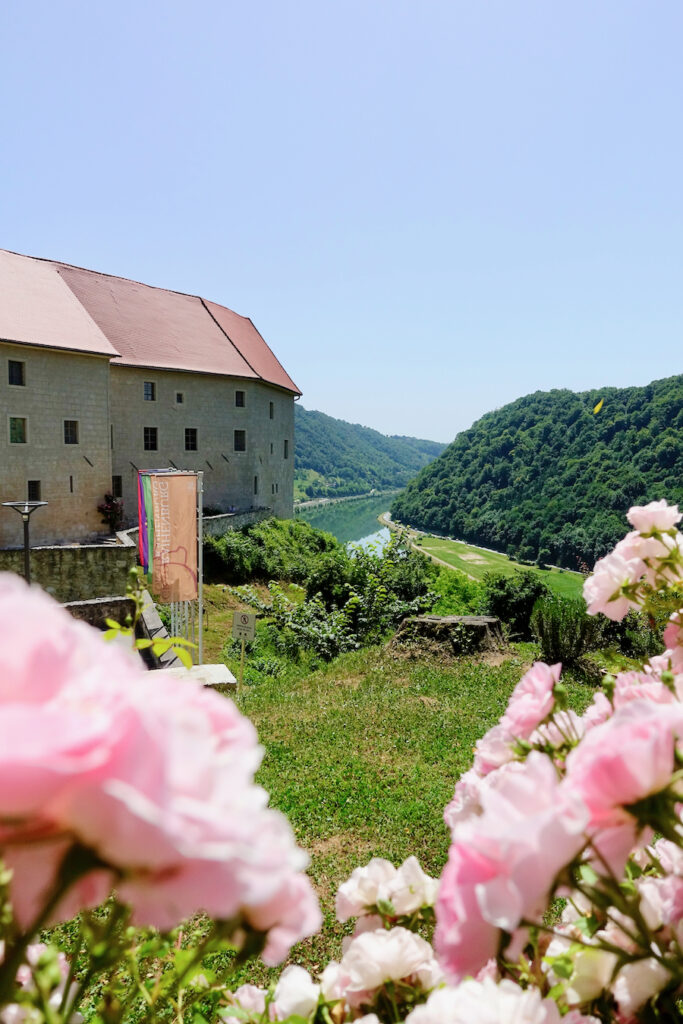
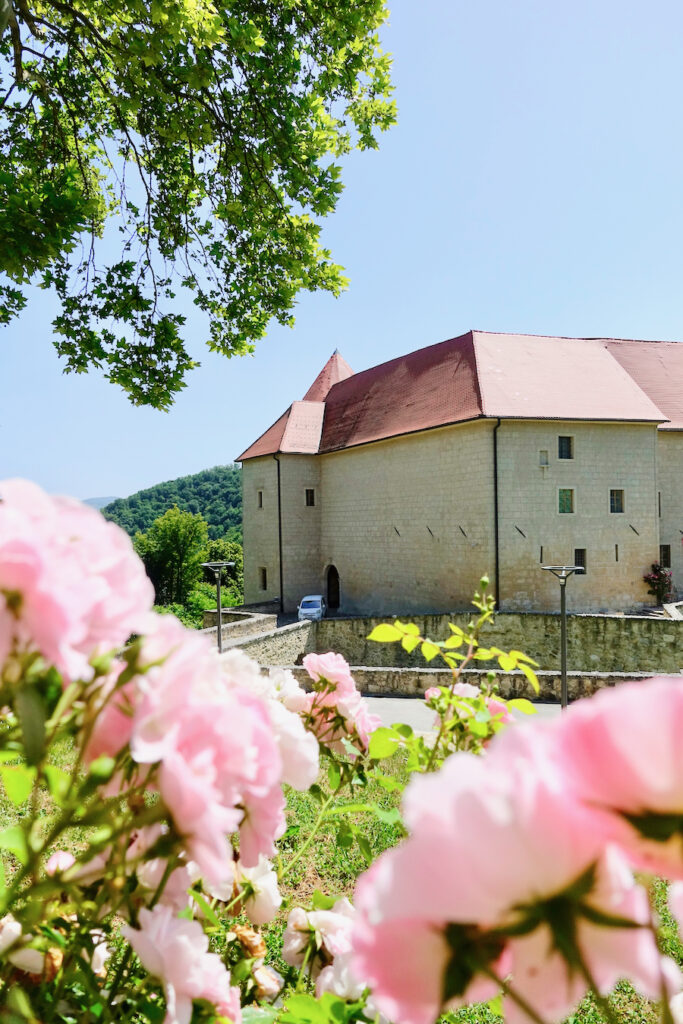
However, the Trappists were not only famous for their cheese, chocolate and liqueur, but also for adopting transformative innovations like the telephone and electricity years before the others. The first tractor introduced into the region? By Trappist monks, of course!
Unfortunately, the German occupiers took control over the castle in 1941 and transformed it into a deportation camp for Slovenians. From Rajhenburg Castle, about 65,000 Slovenians were deported out of the 80,000 altogether.
Nowadays, after a complete renovation a few years back, the castle goes well beyond a classic museum. Just to name a few, one can see contemporary exhibitions, listen to concerts, have a traditional wedding, while they also organize workshops for schools. Classy.
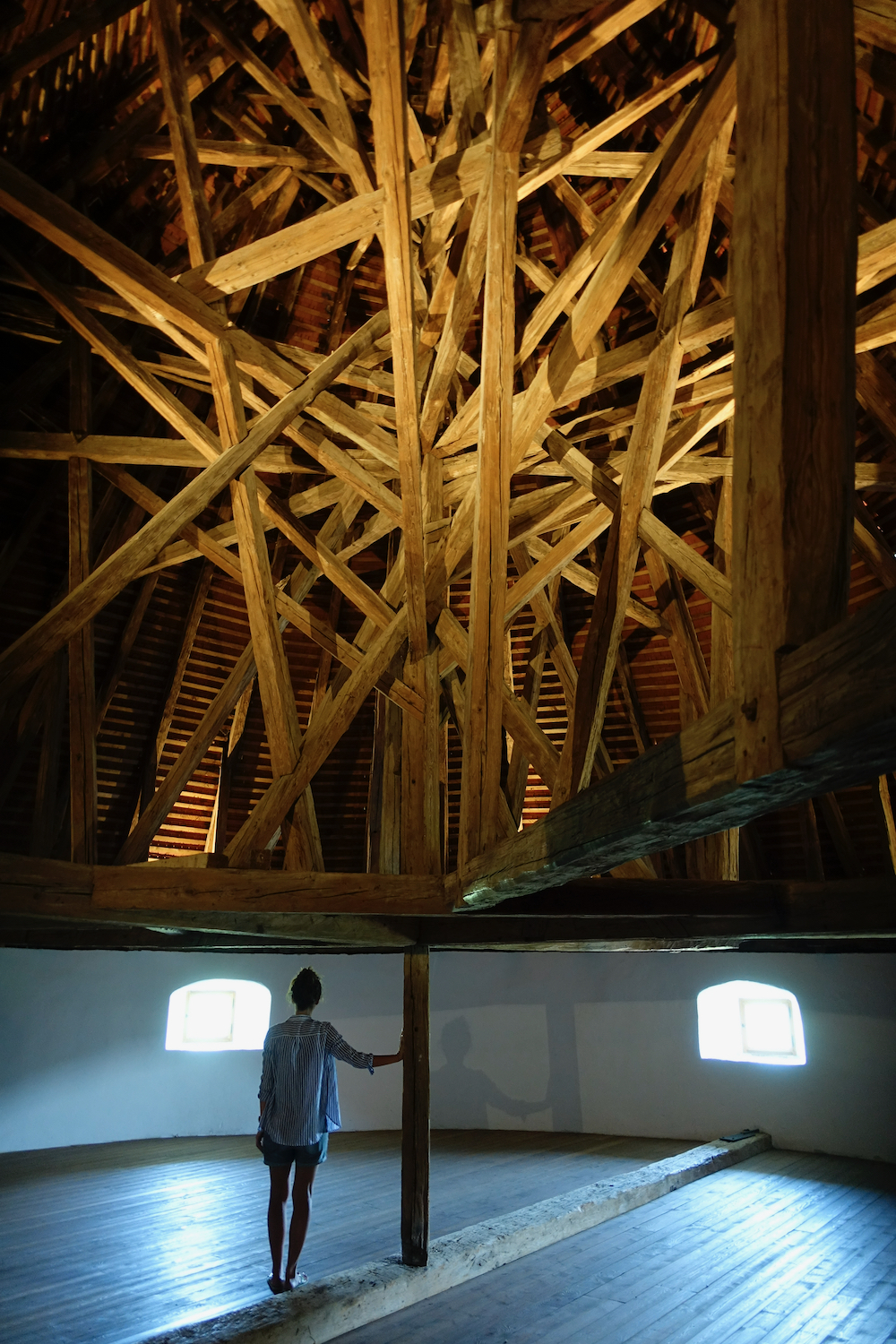
Wine tasting at the Albiana and the Klet Krško
Talking about classy. In the hot afternoon sun we stroll about the vineyards, lush green and healthy, 20 ha stretching along the rolling hills of the Albiana estate. The owners welcome us to their estate at a comfortable table in the midst of the vineyards; underneath a shade sail surrounded by countryside idyll, their selection of high quality wine tastes mind-blowing.
They talk about the history of the estate, which dates back to 1936, and their efforts towards producing the highest quality wines following the most natural and ecological recipes. Paired with exquisite appetizers such as Melitini Okusi, every combination with either the white, red, sparkling or rosé, stimulates a completely unique experience and fresh taste.
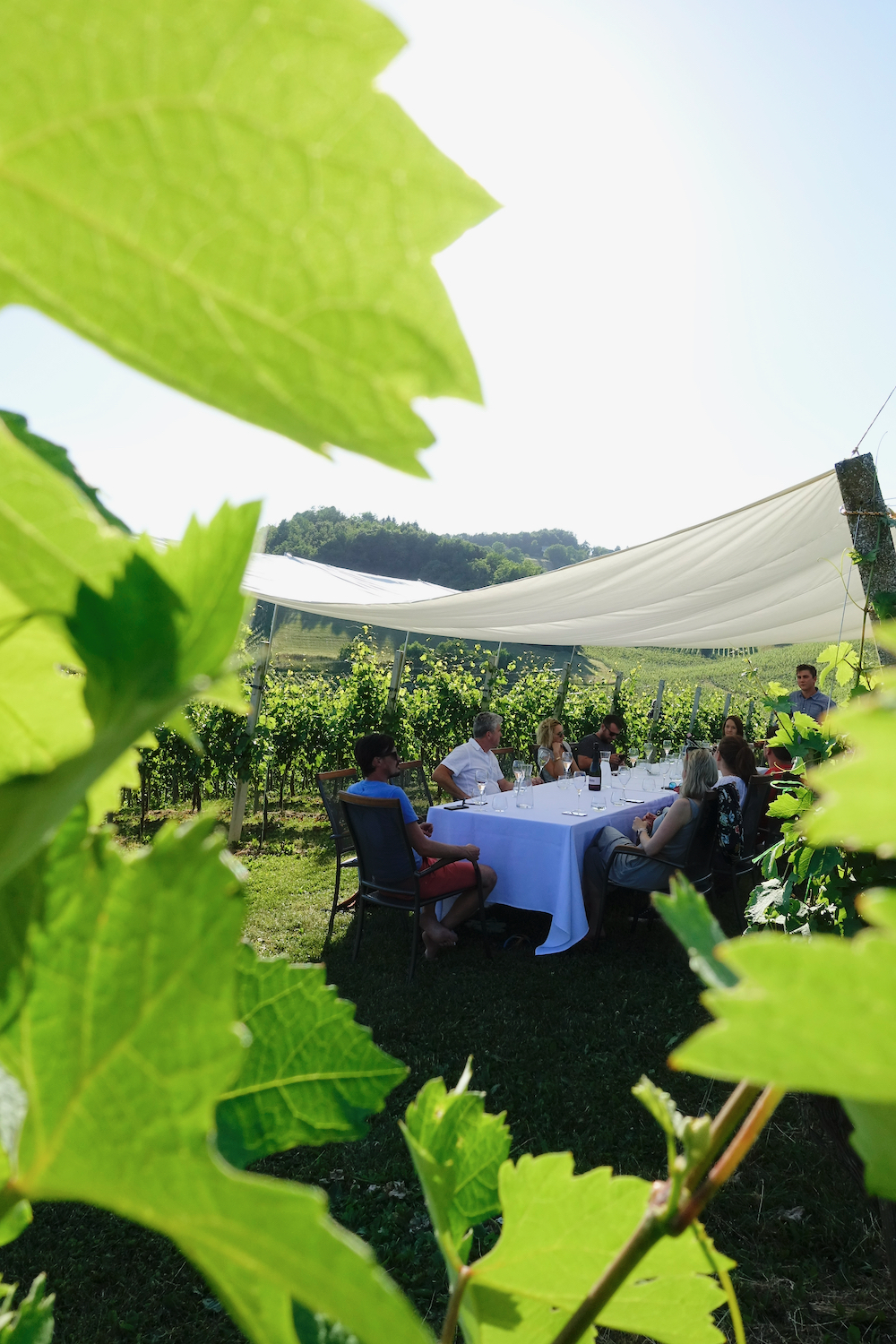
We continue our wine-tasting tour to the Klet Krško, the biggest producer of the Cviček wine in the world. On some 500 ha of vineyards, stretching across the beautiful hills of the Krško region, the wine growers of the Klet Krško Association make over 1.5 million liters of wine yearly, of which as much as 90% is their flagship product Cviček. If you haven’t heard of the sort yet, the Cviček is a Slovenian wine and boasts the highest levels of anti-oxidants among wines!
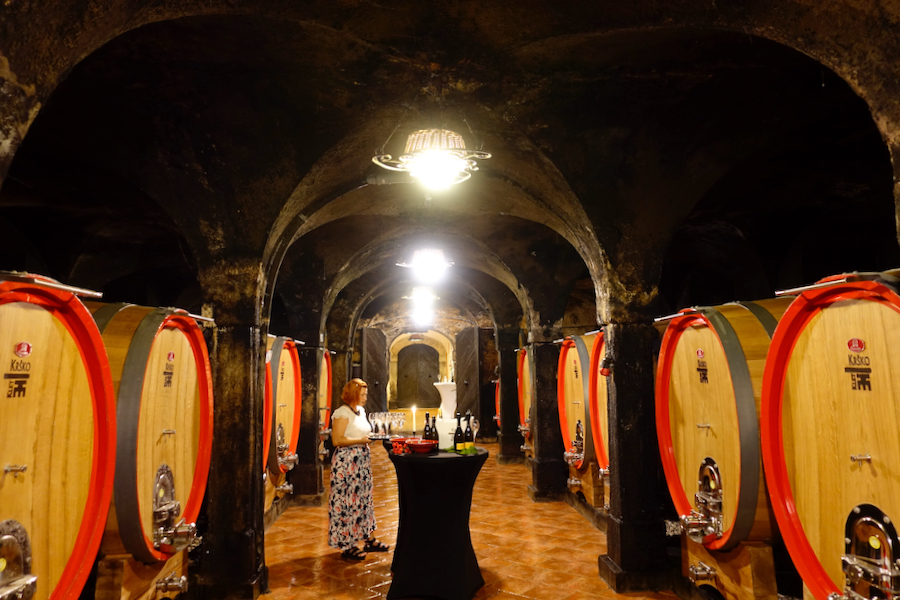
Two weeks after the visit, back in my mundane reality, I humbly fantasize about exploring the waterfalls, biking in the vineyards, and being pampered with the most wonderful food and wine. I’ve had my share of good restaurants and otherworldly hikes in Slovenia and abroad, and I can easily say that Krško compares with the best. Tourism is in its teens here, though; they’ve got real gems but are still unknown to the world. What a shame as the whole experience was mind-blowing!
Stay tuned for more outdoor adventures! Join seventy thousand Exploring Slovenia fans by liking us on Facebook, Twitter, and Instagram. If you enjoyed this story, sign up for the monthly exploringslovenia.com/blog newsletter. A handful selection of stories from Hiking and Climbing in Slovenia, delivered to your inbox every month.
Looking for a gorgeous tour in the mountains? Exploring Slovenia offers guided hiking and climbing tours!



